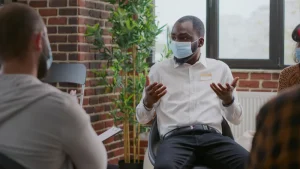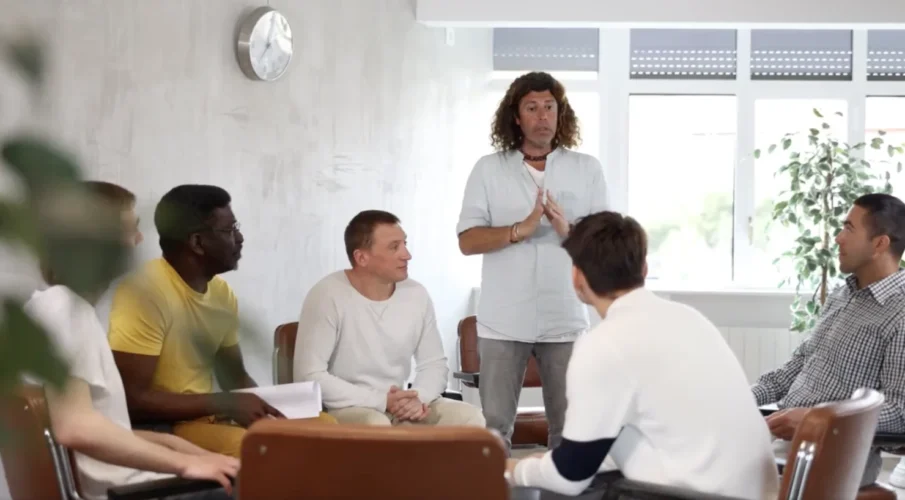In brief: Cognitive behavioral therapy CBT InformedHealth org NCBI Bookshelf

Maria, overwhelmed by academic tasks, breaks down her study sessions into smaller, manageable sections. As she masters each segment, her confidence grows, making the workload seem more manageable. John, feeling worthless after a rejected job application, questions his belief that he’s incompetent.
Post-Traumatic Stress Disorder (PTSD) Formulation

Adam, dealing with anger issues, visualizes his anger as a separate entity named “Fury.” This helps him view his emotions objectively and manage them more effectively. When people feel depressed or anxious, they may be less likely to do the things they enjoy. Behavioral activation is a CBT coping skill that helps you get more active, even when you might not be feeling it. To a large extent, is at the core of all the cognitive-behavioral coping strategies described here, so this is a great place to start. Such thought patterns can sometimes develop into self-fulfilling prophecies and make life difficult for those affected. If you think that other people don’t like you, for instance, then you’re likely to put your guard up when you’re around them.

CBT for Depression
With CBT, the ultimate goal is to focus on the relationship between thoughts, feelings, and behaviors. CBT focuses on finding ways to change current thought patterns and behaviors that are negatively impacting your life. It often helps you get better over cbt interventions for substance abuse time, but the process can be difficult. Don’t worry if you cry during a session — it can be a typical experience during therapy. In general, seeing a therapist you can communicate and work well with will help you get the most out of your therapy sessions.
Procedures and Techniques of CBT
This might involve teaching you how to identify your goal or how to distinguish between short- and long-term goals. It may also include helping you set SMART goals (specific, measurable, attainable, relevant, and time-based), with a focus on the process as much as the end outcome. Cognitive behavioral therapy focuses on changing the automatic negative thoughts that can contribute to and worsen our emotional difficulties, depression, and anxiety. These spontaneous negative thoughts also have a detrimental influence on our mood. If you are a therapist who uses mindfulness-based approaches, consider finding or pre-recording some short mindfulness meditation exercises for your clients.
Cognitive behavioral therapy is based on the premise that your thoughts or perceptions about a situation—rather than just the situation itself—determine the way you feel and behave. These thought or belief patterns are often learned from your past experiences. Moreover, the self-awareness and cognitive flexibility developed through CBT can enhance various aspects of your life, from improving relationships to boosting work performance. The ability to recognize and challenge negative thought patterns can lead to increased self-esteem and a stronger sense of personal agency. The cognitive behavioral therapy (CBT) triangle, commonly called the ‘cognitive triangle,’ provides a structured framework to understand the interplay between thoughts, feelings, and behaviors.
Audio Collection: Psychology Tools For Mindfulness
This cognitive distortion is all-or-nothing thinking, with no room for complexity or nuance—everything’s either black or white, never shades of gray. Homework is also part of the process, so you’ll be asked to fill out worksheets, a journal, https://ecosoberhouse.com/ or perform certain tasks between sessions. If there’s an activity you tend to put off or avoid due to fear or anxiety, getting it on your calendar can help. Once the burden of decision is gone, you may be more likely to follow through.

Limitations of CBT
- CBT usually concludes with a session or two of recapping, reassessing, and reinforcing what was learned.
- When a person is distressed or discouraged, his or her view of an experience may not be realistic.
- A therapist can help a client practice or experience a situation/event in a safe space by acting out the interaction.
- The clients learn to discriminate between their own thoughts and reality.
As mentioned previously, exposure therapy is a great technique used in CT. The Imagery Based Exposure worksheet uses imagery to create a hierarchy of fear-based situations and helps clients imagine overcoming each step. This can be an effective way of dealing with fear and anxiety in a safe and secure setting.
Balanced Life: Achieving Stress Level Zero and Understanding Its Importance
- Diaphragmatic breathing, also called breathing retraining or deep breathing, is a basic cognitive coping strategy for managing anxiety.
- If you have questions, call or email the therapist’s office before you choose.
- But you can take steps to get the most out of your therapy and help make it a success.
- The role of CBT-i is to change those patterns, through techniques such as challenging anxious thoughts and adhering to a set sleep schedule.
- Also be prepared to answer questions about what brought you to therapy, your symptoms, and your history—including your childhood, education, career, relationships (family, romantic, friends), and current living situation.
- There are benefits to engaging in any type of therapy — not just for yourself, but also for your family members, partner, or other people in your life.
Meditation for Stress Relief: Techniques, Benefits, and Practical Tips
